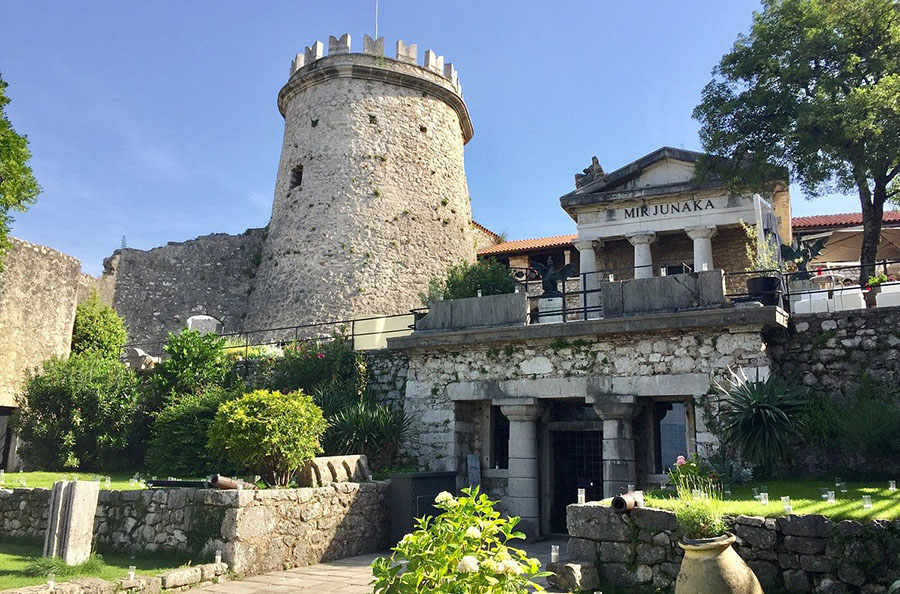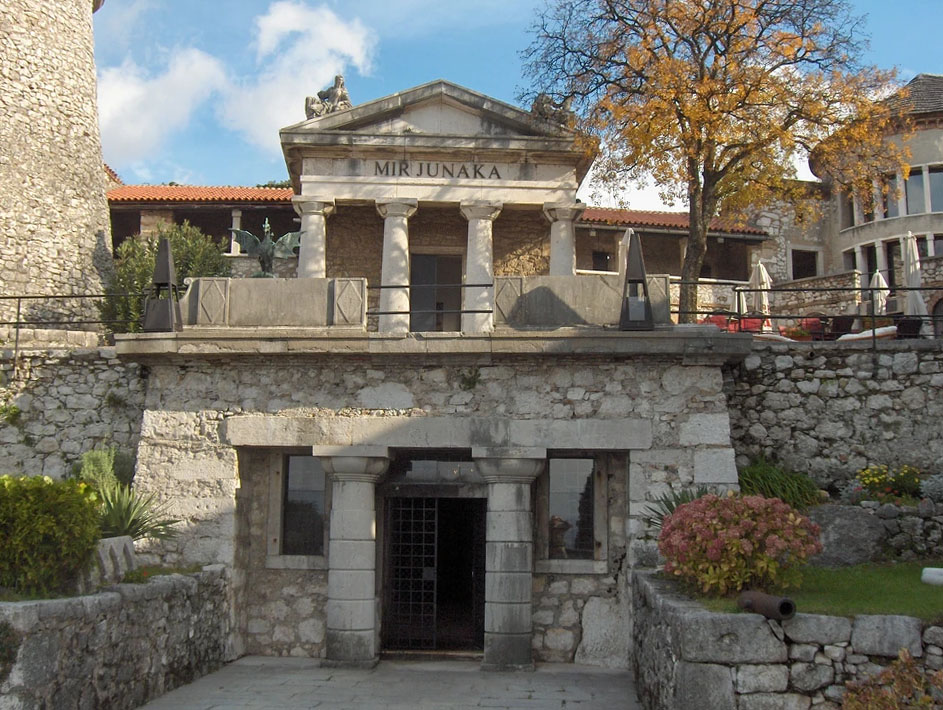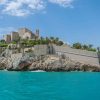Trsat Castle
Trsat Castle, known as Gradina Trsat in Croatian, is a historic fortress. It is perched on a strategic hilltop overlooking the Adriatic city of Rijeka in Croatia. This castle has medieval origins and strategic importance. It offers visitors a glimpse into the rich history of the region. Additionally, breathtaking views of the city and the Kvarner Bay can be enjoyed. Trsat Castle has become a significant cultural landmark, drawing tourists and locals alike. It plays a central role in the history and heritage of the area.
Location of Trsat Castle
Trsat Castle is located in the Trsat district. Specifically, this district lies on the eastern bank of the Rječina River, in the city of Rijeka, Croatia. The castle is situated at an elevation of 138 meters above sea level. Consequently, this gives it a commanding position with panoramic views of Rijeka, the Rječina River valley, and the vast Adriatic Sea. The hilltop location was chosen for its strategic importance. This provided a natural advantage for defense and surveillance over the surrounding areas. Additionally, the castle’s proximity to the sea and its position along important trade routes made it a key military and strategic point throughout its history. The area around the castle is easily accessible from the city center of Rijeka. Thus, it has become a popular destination for both historical exploration and leisure activities.

History of Trsat Castle
The origins of Trsat Castle date back to ancient times. People believe that the Illyrians, an ancient group of tribes who inhabited the western Balkans, used the site. The castle as it stands today was first constructed during the early medieval period. This likely occurred in the 13th century. Builders constructed it on the foundations of a Roman fortress, which served as a defense post during the Roman Empire. This Roman connection highlights the long-standing importance of the site as a defensive stronghold.
The Frankopan family, one of the most powerful noble families in Croatia, played a significant role in the castle’s history. In the 13th century, Trsat Castle came under the ownership of the Frankopans. The family expanded and fortified it, making it one of their strongholds. The castle was crucial during the medieval period, serving as a defense against invading forces. This was particularly true during the turbulent periods of conflict between the Croatian-Hungarian Kingdom and the Venetian Republic.
Throughout the centuries, Trsat Castle witnessed numerous battles and changes in ownership. In the 16th century, it was briefly under the control of the Austrian Habsburgs. The Habsburgs further fortified the structure to protect against the advancing Ottoman forces. The castle’s military significance diminished over time as the Ottoman threat receded. By the 17th century, the castle had fallen into a state of disrepair.

Current status
Today, Trsat Castle stands as a well-preserved monument of Rijeka’s rich cultural heritage. The castle has been carefully restored and maintained. It has become a popular tourist attraction and cultural venue. The castle grounds are open to the public. Visitors can explore the various towers, courtyards, and walls that have withstood the test of time.
The interior of the castle, although not fully furnished as a historical residence, features several rooms. These rooms house exhibitions, including historical artifacts, artworks, and displays detailing the history of the castle and the surrounding region. The Nugent Mausoleum, located within the castle grounds, adds a touch of historical intrigue. It draws those interested in the life and legacy of Field Marshal Laval Nugent.
One of the highlights of Trsat Castle is its breathtaking view. This remains a major draw for visitors. The vantage point from the castle provides an unparalleled view of the city of Rijeka, the Rječina River, and the Adriatic Sea. Cultural events, including concerts, theatrical performances, and exhibitions, often take place at the site. This makes it a vibrant part of Rijeka’s cultural scene.
In recent years, the castle has become a popular spot for both locals and tourists. They seek a blend of history, culture, and natural beauty. The surrounding Trsat area is also home to several cafes and restaurants. These establishments offer visitors a chance to relax and enjoy the stunning surroundings after exploring the castle.
Admission
Community features
Castle features
Video
Location
Official website
Featured listings














